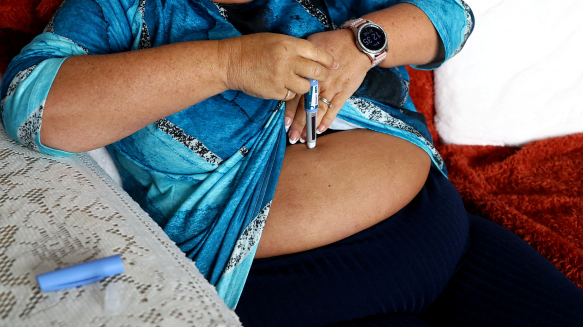President Aliyev highlights security, unity and peace in New Year address
President Ilham Aliyev said Azerbaijan ended 2025 as a year of peace, security and stability, stressing that unity between the people and the governme...

The World Health Organization has added GLP-1 drugs to treat diabetes to its essential medicines list, alongside treatments for cystic fibrosis and cancer, and said it hopes this will improve global access to the costly drugs.
The list, consisting of 523 medicines for adults and 374 for children, is a catalogue of the drugs the WHO believes should be available in all functioning health systems.
In the past including a drug, for instance, HIV treatments in the early 2000s, has helped to ensure access for people in poorer countries.
“Rather than letting price be a disqualifying factor, the committee views inclusion in the essential medicines list as a potential catalyst for access,” Dr Lorenzo Moja, head of the WHO secretariat overseeing the list, told Reuters.
The expert committee added the active ingredients in Novo Nordisk’s NOVOb.CO Ozempic and Eli Lilly’s LLY.N Mounjaro to the list, to treat type 2 diabetes in conjunction with established cardiovascular disease, chronic kidney disease or obesity.
The drugs were initially developed for diabetes but have also become hugely popular weight-loss drugs, under different brand names.
The WHO stopped short of adding them to treat obesity alone, as it also did in 2023.
The committee said this decision provided clear guidance on which patients would most benefit from the therapies.
“High prices of medicines like semaglutide and tirzepatide are limiting access to these medicines,” the WHO statement added, saying that encouraging generic drugmakers to produce the product would also help when patents begin to expire on the drugs next year.
Globally, more than 800 million people worldwide were living with diabetes in 2022, the WHO said. There are also more than 1 billion people with obesity.
Earlier this year, a WHO memo said it would recommend the use of the drugs for obesity, a separate step to adding them to the essential list.
The Russian radio station known as 'Doomsday Radio' (or UVB-76) unexpectedly began playing ‘Swan Lake’, music from a ballet composition. The last time this was done was during the deaths of Soviet-era leaders and the 1991 coup.
Protests in Iran over soaring prices and a plunging rial have spread to universities in Tehran, as students join shopkeepers and bazaar merchants in demanding government action. With inflation above 42% and the rial at record lows, unrest continues to grow across the country.
As Russia’s war in Ukraine enters its fourth year, rising casualties, economic struggles, and mounting unrest expose cracks in society. Despite Kremlin propaganda, frustration is growing as more Russians question the government’s narrative, according to The Washington Post.
The head of Yemen’s Presidential Council, Rashad al-Alimi, has ordered all forces linked to the United Arab Emirates to leave Yemen within 24 hours.
European leaders held talks on Ukraine after Russia said it would revise its negotiating position, citing an alleged Ukrainian drone attack that Kyiv has firmly denied.
An international scientific-practical congress marking the 90th anniversary of the Azerbaijan State Advanced Training Institute for Doctors named after Aziz Aliyev has opened in Baku.
China has announced plans to fully cover childbirth-related costs for families as authorities move to incentivise young couples to have more children.
World Health Organization (WHO) Director-General Tedros Adhanom Ghebreyesus said on Thursday that he still hopes the U.S. administration will reconsider its decision to withdraw from the organisation next month, warning that its exit would be a loss for the world.
The United States has signed significant health cooperation agreements with Uganda and Lesotho, further strengthening bilateral relations and advancing global health initiatives, the U.S. State Department announced on Wednesday.
A viral claim circulating online that Denmark requires sperm donors to have an IQ of at least 85 is misleading. While one Danish sperm bank, Donor Network, does use an IQ threshold, there is no nationwide legal requirement for donors to meet a specific level of intelligence.
You can download the AnewZ application from Play Store and the App Store.

What is your opinion on this topic?
Leave the first comment